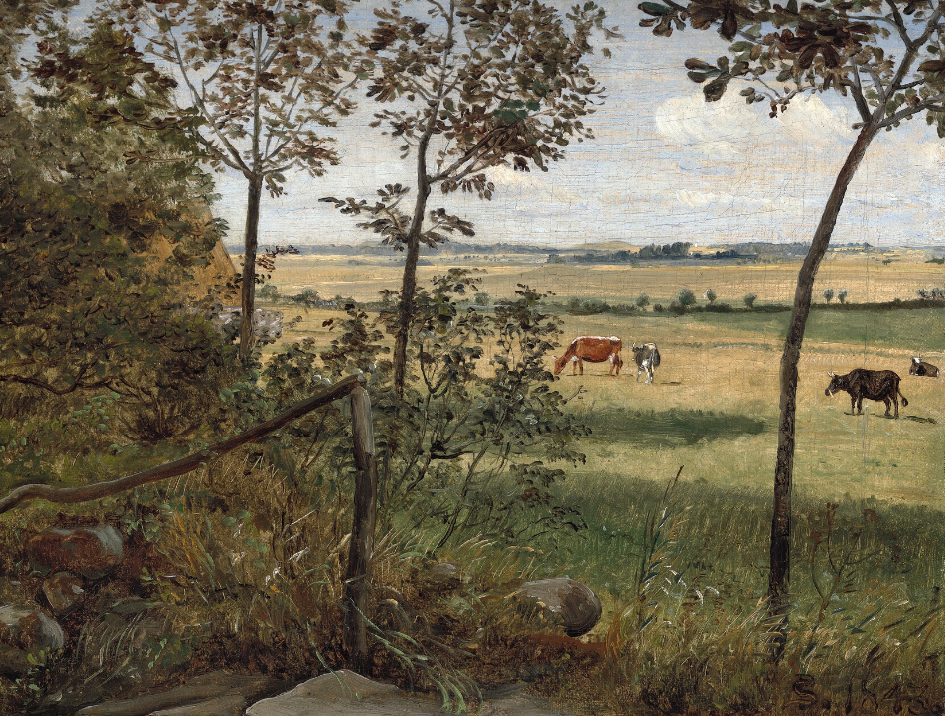In the summer of 1843, Skovgaard travelled to Vejby, where he had grown up, together with Johan Thomas Lundbye, a friend from the Royal Danish Academy of Fine Arts. Over the summer, the two young painters produced drawings and paintings that would later form the basis for several major pieces. Sommerlandskab med køer set fra Sandgraven i Vejby mod Ørby Bavn (Summer Landscape With Cows Seen From the Sand Pit in Vejby Towards Ørby Bavn) represents a significant step in Skovgaard’s development as a landscape painter.
Capturing a moment in time
This beautiful little landscape study from Vejby captures a view from the edge of a wood, in between slender tree trunks, to cows grazing on the meadow. You can almost feel yourself turning left, resting your hand on the makeshift rail and continuing down the simple stone steps. But Skovgaard pauses. Our gaze rests at fields ripening in the sun, at drifting clouds. We are greeted by a meditative calm and a breeze scented by grass and woodland floor.
An important addition
Skovgaard helped developed landscape painting as an independent genre. Instead of simply forming a background for persons or architecture, nature and landscape suddenly became the primary topic. This small study is an important piece in the collection of the Skovgaard Museum, both as a work of art in its own right and as a point of departure for Skovgaard’s later, better known paintings. including Parti fra udkanten af Tisvilde Skov (View From the Edge of Tisvilde Wood) from 1845, which is also included in the museum’s collection.
About P.C. Skovgaard
Peter Christian Skovgaard (1817–1875) is regarded as one of the principal landscape painters in the National Romantic style from the Golden Age. He was accepted into the Royal Danish Academy of Fine Arts in Copenhagen at just 14 years of age. At the encouragement of his teacher at the Academy C. W. Eckersberg, Skovgaard was among the first artists to leave the studio and paint en plein air. However, while Eckersberg called for realistic depictions of nature, artists such as Skovgaard and Lundbye chose to alter the scenery and only paint the most beautiful aspects.



